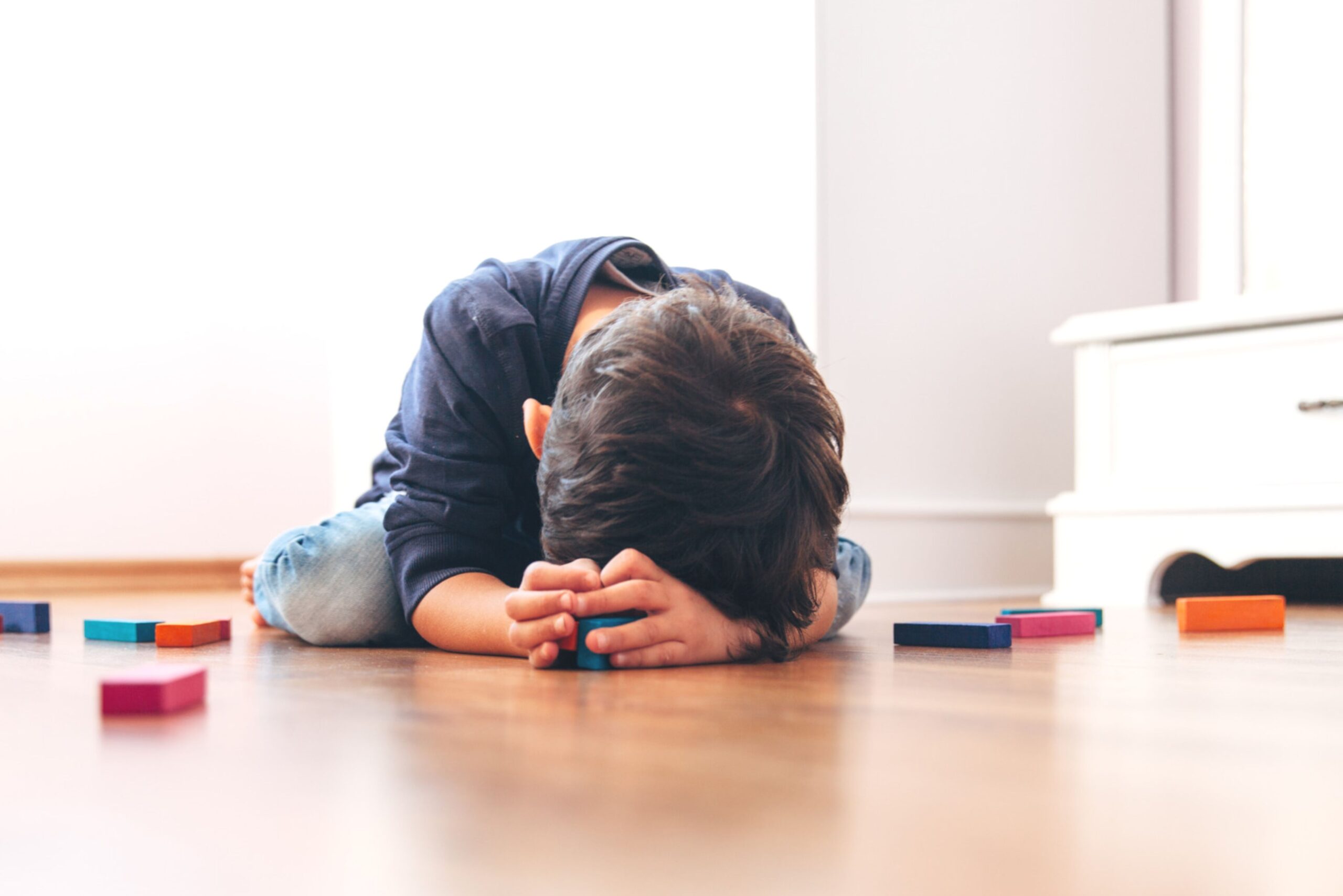Collapse (also called “hypo-arousal”) is a response like fight-or-flight, but we shut down instead of jump into action.
It is a survival response that causes us to shut down as a way of protecting ourselves.
How does this look and feel?
- Feels like: disconnected from ourselves and the world, numb, dizzy, hopelessness, shame, feeling trapped, not connected to our body
- Eyes might look spaced out, lack of eye contact
- Overly compliant, agrees, doesn’t argue, nods wordlessly
- Zone out/ check out/ space out/ seems “far away”
- Decreased facial expressions, might have a blank look on face
- Might feel nauseated, throw up, have an accident (wet pants or poop pants)
- Might feel low or no pain
- Breathe slower than usual
- Might seem non-verbal or like it’s difficult to talk, words might come slowly
- Loss of body awareness, limp arms and legs
- Difficulty thinking clearly, forgetful
- Body: might curl up in a ball, lay on the ground, seem frozen in place, or slump over
What should I do to help a child if they are in collapse?
- First, connect the child to the place they are in. “You look like you might be noticing something over on the wall,” “The ground is so solid under my feet here,” “The carpet feels so soft.”
- Once the child is more aware of their location, connect them to your relationship: “You’re looking over at the wall, I’m going to look over here at this one.” “You are right there, and I am right here. We are here together.” Create connection. Remind the child that they are not alone and that they can reconnect to themselves, their environment, and relationships.
- Once the child is connected to their location and relationship, support them in connecting them to their body by drawing attention to body sensations. Model: “It’s hard for my eyes to stay focused on what I want to look at,” “I feel kind of spacey,” “I feel far away from myself.” Other examples to orient the child to their bodies: “Are your shoes too tight? Let’s loosen them,” “Your hair is in your eyes,” or non-verbal (if touch is appropriate with your client): Touch their feet or elbows, using a light tapping to ground the child. You can also combine: Tapping elbows while saying “Elbows! There are your elbows.”
How will I know if a child is more regulated and is no longer in a state of shutdown?
- You feel a sense of social connection with child
- Eye contact will improve
- Ability to respond in words will improve
- Child may return to whatever activity they were doing
- Child seems present in the moment
- Normal rate of breath
- Facial expressions seem typical (happy, sad, etc, instead of blank)
- Body posture seems more solid/strong
*The above was adapted from Synergetic Play Therapy, Polyvagal Theory, and clinical practice by Certified Synergetic Play Therapist Heather Fairlee Denbrough, LiCSW, RPT-S





